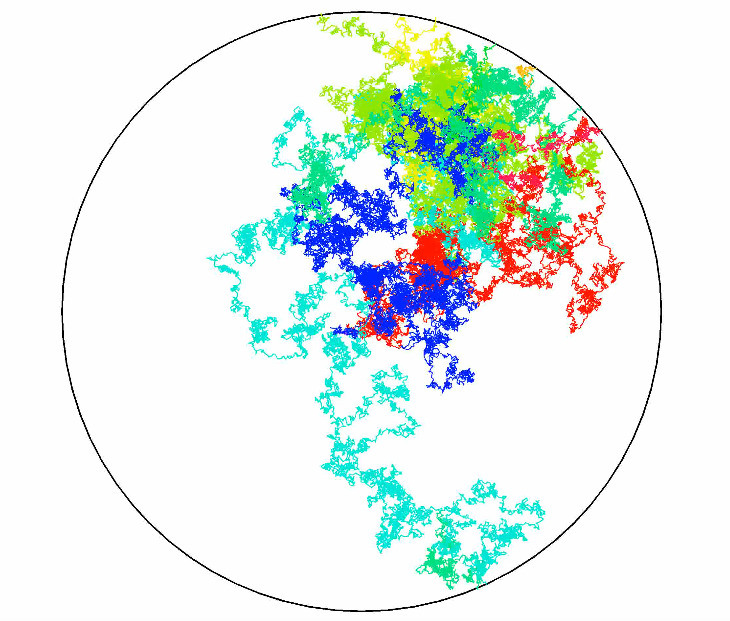Probability at Durham
Possible topics for postgraduate research
Branching Brownian motion with killing
Branching Brownian motion is a model for a particle system with random motion and reproduction. It is defined in an iterative manner, much like the classical Galton-Watson process. The process starts with an initial particle, that moves according to the law of Brownian motion, until an exponential clock (independent of the motion) rings. At this time the particle dies and is replaced by a random number of offspring particles who each stochastically and independently repeat the behaviour of their parent, starting from the point of fission. There are many variants of this model, but I have been particularly interested in the case that the particles live in a bounded domain of space and are killed upon hitting the boundary of the domain (leaving behind no offspring in this case). For fixed domain and offspring distribution, this model exhibits a phase transition in the branching rate: when it is too small the population will become extinct almost surely; too big and it will survive with positive probability. In the critical case - at the parameter where the behaviour changes – it is possible to take a scaling limit of the resulting ``genealogical tree’’ when the process is conditioned to survive for a long time. However, very little is known if one relaxes the assumption of boundedness on the domain. Hence the following question: is it possible to determine the different types of limiting behaviour that may occur, depending on the geometry of the domain?
Contact: Ellen Powell.
